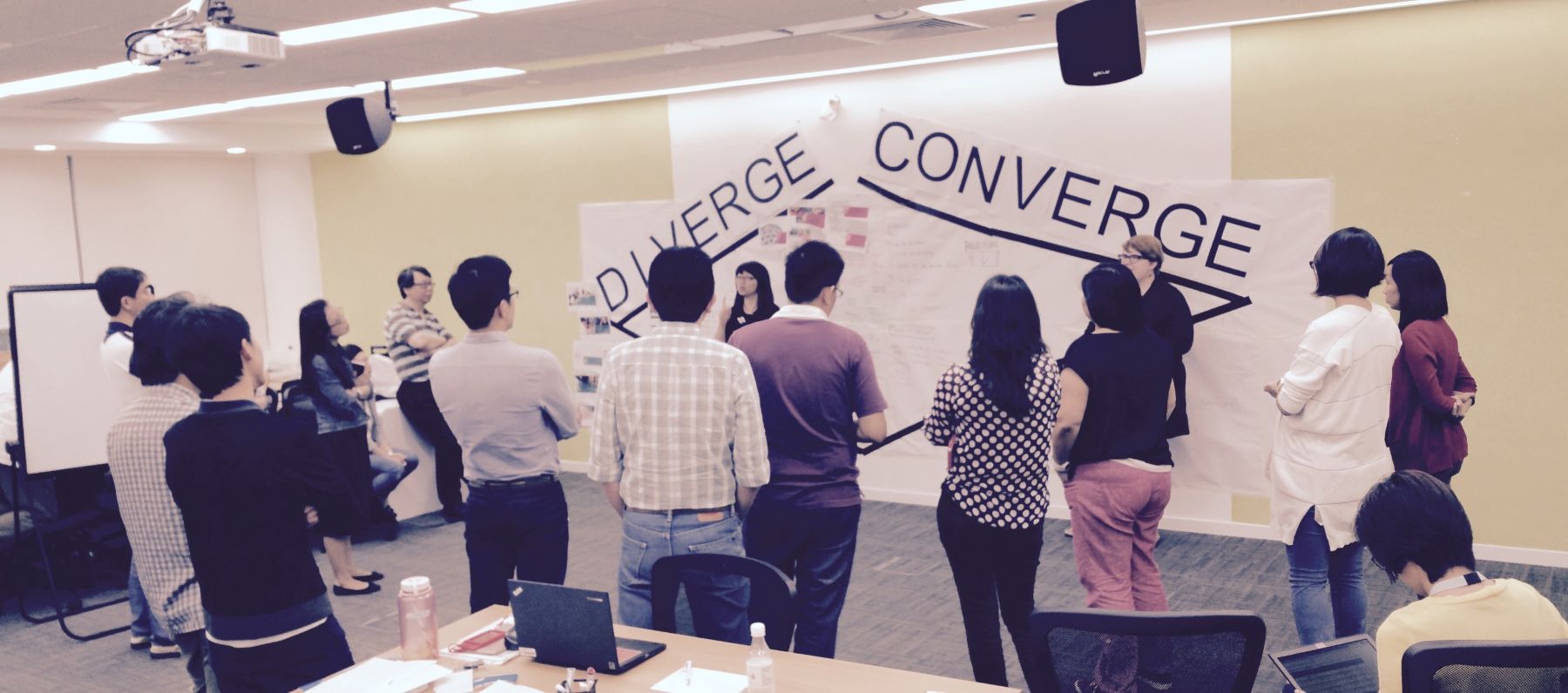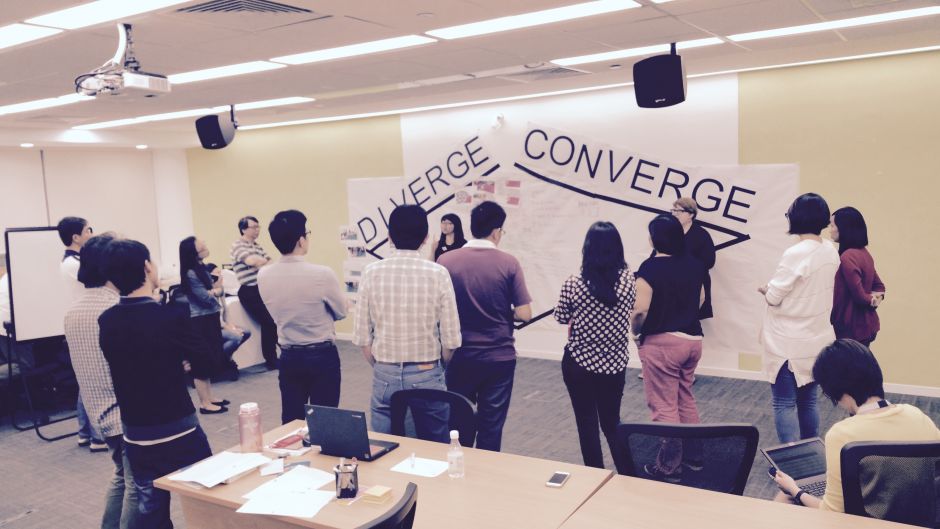Sign up for our monthly newsletter

Five tips for building design capability in your organisation
ThinkPlace’s Debbie Ng, who heads our design education practice in Singapore, shares five things to keep in mind if you’re looking to build design capability in your organisation.
In the last few years, we have seen a surge in interest to use design thinking to tackle the challenges we face in Singapore. But agencies want to do more than simply bringing design thinking to solve a specific challenge; more and more, they are looking to integrate design thinking as a core capability for their organisation. When we engage agencies, we hear things like:
“I am keen to see how we can use design to transform the way our colleagues think about problems and work collaboratively.”
“We have identified design thinking as one of the core competencies that can help us become better at creating policies and services.”
“We would like a component of building design capabilities as part of our projects.”
As Associate Trainers for design thinking programs with the Civil Service College, we have had the privilege to develop and run a series of training courses for the Singapore Public Service since 2015. Based on this experience and our work interacting with agencies on projects over the years, we have found some critical things for agencies to consider before they embark on building design capability and inculcating a design-thinking culture:
1. Understand your ambition
Be clear about why you are investing in design thinking and how it can help your organisation. Don’t just follow the trend and do what other agencies before you have done. Your context and goals will be different.
2. Emphasise mindsets, not just methods
Design thinking is an approach - a way of thinking and doing. It’s not just about design tools (although there are lots of tools that we can learn as well). Mindsets transcend time and should always be the focus of your learning. After all, methods without the right mindsets won’t get you very far.
3. Select the early adopters
Who you send for training matters – even if you plan to eventually train everyone. Set up a core group of early adopters and select them carefully, not solely based on their skills and qualifications but also on their innate qualities such as receptiveness to change and open-mindedness.
4. Think multidisciplinary
Apart from finding the right people, consider having a mix of individuals from different parts of the organisation. They should be open to learning about design thinking and not focused on solving their own problems.
5. Start small, and create opportunities to apply it
Once you’ve selected the right people, think about how you can demonstrate ‘quick wins’. Design needs practice and thrives on real-world application. As much as possible, create opportunities for your teams to apply it on real projects after the training – even if it’s not ‘end-to-end’. Where can you do some rapid ethnography to build empathy? How might you prototype a new concept and test it with users? Even think about opportunities to facilitate and visualise conversations in the workplace. Otherwise, you risk design becoming one of the many great training opportunities that fail to succeed beyond the classroom door in real-world application.
Are you looking to build capability in design thinking and innovation in your organisation? ThinkPlace has experience in helping organisations develop design capability, whether through project-based learning or our range of classroom-based offerings in partnership with the Civil Service College.







